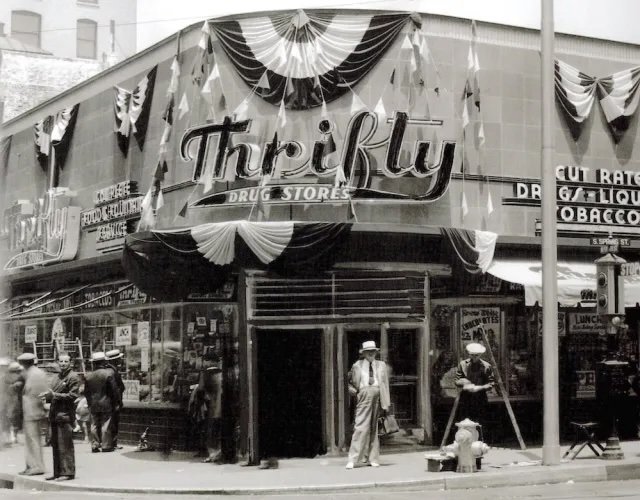An Ergonomic Scoop that Dispenses Ice Cream in Cylinders
The 85-year-old design is iconic to Californians
Fun fact: In the early- to mid-20th century, American drug stores and pharmacies used to have counters with soda fountains where they sold both fizzy drinks and freshly-scooped ice cream.

What do those things have to do with medicine? There are two conventional explanations: One is that carbonated beverages were thought to have medicinal properties and promoted proper digestion. The second is that pharmacists could apply their knowledge of chemistry to concocting palatable sodas.
But the true motivation for drug stores selling soda and ice cream, as with most things in the modern world, is more stark: Money. ""If you have a line of business [where] your customer base is taking care of those who don't feel well," Scott Besci told L.A. Eater, "and they only come to you once or twice a year, you need a reason for customers to come in more often."
Besci should know. He's the general manager of the Thrifty Ice Cream factory outside of L.A. Thrifty traces their roots to SoCal's Thrify Drug Stores, launched in 1929. That chain, run by brothers Harry and Robert Borun, "sold single scoops of ice cream for only 5 cents, using the cheaply priced sweet as a loss leader product to entice customers to visit more often."

After the 1930s the Borun brothers realized they could make more profit if they cut out the middlemen and made their own ice cream, and they opened the Thrifty Ice Cream plant in 1940.
There was something very unique about the ice cream sold at Thrifty Drug Stores—and it had to do with both ergonomics and portion control. Scooping frozen ice cream out of a bin was physically difficult, particularly for smaller workers. So the Borun brothers outfitted their chains with a specially-commissioned cylindrical scoop—designer unknown, sadly—that employed the user's body weight, rather than arm strength, to extract ice cream from the bin.

"You just put [the scooper] in the container, you push your weight against it, so no matter how petite or how big a person you are, you can push that down, simply turn it 90 degrees, and pull up and have a perfectly formed ice cream scoop," Becsi explains.
A large trigger on the scoop activated a push-out mechanism that ejected the ice cream. Because the scooper was barrel-shaped, the ice cream came out in a cylindrical shape of roughly uniform amount.

The cylindrical shape also made it easier to stack multiple flavors.

This ergonomics-borne invention also yielded a branding benefit. Thrifty Ice Cream came to be associated with the cylindrical shape, which you couldn't find elsewhere.


Today Thrifty Drug Stores no longer exist; they were acquired by Rite Aid in the '90s. But Rite Aid shrewdly kept the Thrifty Ice Cream brand around. And, since they own the I.P. for the scoop, are now making a few extra bucks by selling the distinctive scoop to the public.


It retails for $27.
-
o1Favorite This
-
Q1Comment
K
{Welcome
Create a Core77 Account
Already have an account? Sign In
By creating a Core77 account you confirm that you accept the Terms of Use
K
Reset Password
Please enter your email and we will send an email to reset your password.


Comments
Is it stamped metal or cast aluminum which I love the look of? Kind of like the cast aluminum ice hammers used in airplane galleys.